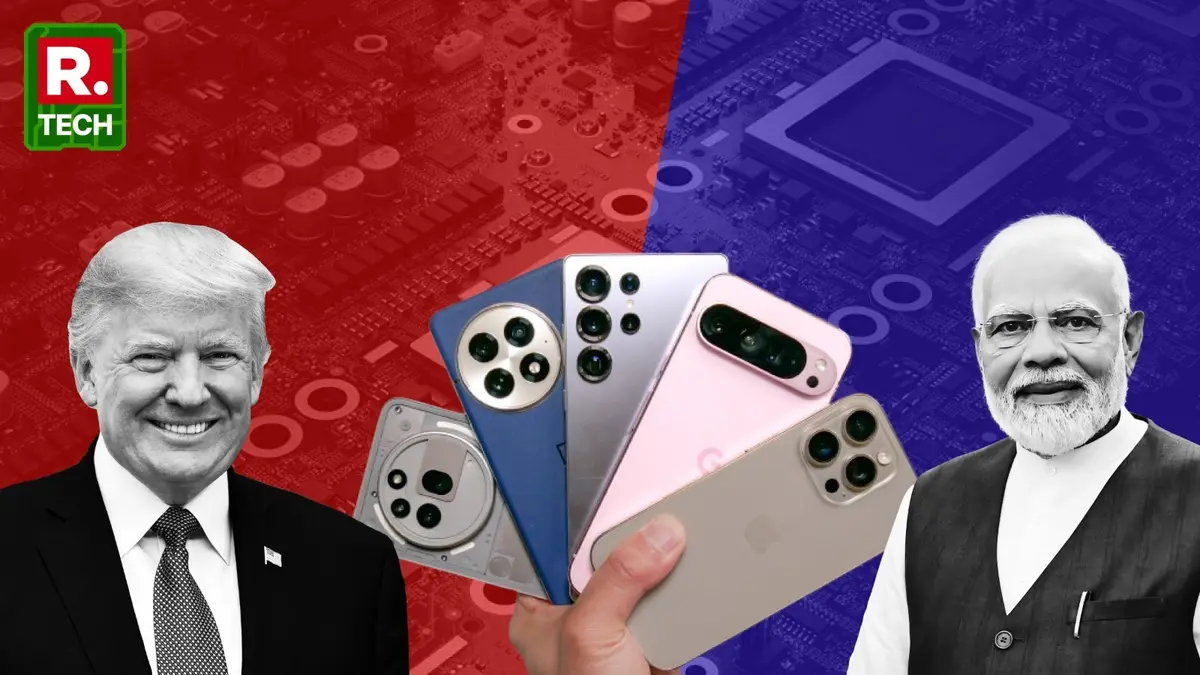Updated April 3rd 2025, 18:12 IST
India’s Electronics Industry Eyes Gains as US Tariffs Hit China, Vietnam Harder
The far-reaching implications of lower tariffs could boost India’s electronics ecosystem, according to the electronics manufacturing industry.

The reciprocal tariffs announced by US President Donald Trump on Wednesday are set at 27 per cent for India. However, the tariffs on neighbouring countries put India in a better position to absorb the impact, according to the electronics manufacturing industry. While exports from China will be levied a 34 per cent tariff, those shipping out of Vietnam will be taxed even higher at 46 per cent. The far-reaching implications of lower tariffs could boost India’s electronics ecosystem, making it a more attractive exporter nation than its peers.
“India has emerged favourably placed in the first round of reciprocal tariff announcements, especially compared to key electronics competitors like China, Vietnam, Thailand, and Indonesia,” Pankaj Mohindroo, Chairman of the India Cellular and Electronics Association (ICEA) told Republic Tech. ICEA represents India’s leading electronics manufacturers, such as Dixon Technologies, Motorola, Xiaomi, Lava, Foxconn, and Apple .
“For India, the situation presents a mixed picture with relatively lower tariffs, but also offers an opportunity for further negotiation,” said Tarun Pathak, Research Director at market analytics firm Counterpoint Research.
As an emerging exporter of electronics, including smartphones, India could benefit from the China-Plus-One strategy, ramping up production amid a potential increase in competition from neighbours. However, the perks of being agile in navigating the tariffs could also allow New Delhi to bolster its position against markets such as Brazil and Egypt, which could gain marginally due to lower tariffs. A better position in the global manufacturing ecosystem, Mohindroo explained, could offer “a valuable near-term window of export competitiveness.”
That said, the outcomes of the imminent Bilateral Trade Agreement (BTA) will seal the deal regarding how India’s exports to the US will impact the local manufacturing industry. “... the true long-term inflexion point for India’s electronics trade with the US will rest on the successful conclusion of a BTA,” Mohindroo said. “The BTA must now become the cornerstone of our trade strategy.”
According to the Ministry of Electronics and Information Technology (MeitY), India's mobile phone exports surged to ₹1.2 lakh crore in 2023-24, representing a 77-fold increase since 2014-15. As the world's second-largest mobile phone producer, India shipped devices worth $12.6 billion in 2024, making up 31 per cent of the total exports.
More retaliation, more benefits to India?
The retaliatory tariffs from China and other leading exporter nations could also help India devise a plan to convert “this strategic opening into sustained export growth and supply chain integration.”
India’s supply chain has expanded dramatically over the past few years, with major smartphone brands like Samsung, Apple, and Oppo doubling down on their investments in the country. Apple’s prominent supplier Foxconn recently opened a second facility in Hyderabad to expand production lines, while Tata’s acquisition of Wistron helped the iPhone maker diversify its supply chain. Samsung and Oppo’s production facilities in India are among the biggest in the world.
“In the case of smartphones, supply chains are so seamlessly integrated and Asia dominated,” Pathak told Republic Tech, adding that it will be “impractical” for the US to start manufacturing locally. In the wake of retaliation from leading Asian countries could hamper the supply chain network, ultimately impacting American consumers.
“The biggest losers in this entire episode will be the American consumers because the costs of their products are going to go up significantly,” said Pathak.
However, reactions to the tariffs from smartphone manufacturers are yet to come. Even though the manufacturing capacities of all leading brands have increased significantly, it is unclear whether the facilities can absorb the extra demand to narrow gaps between volumes and revenues.
Besides the overall tariffs, Trump also announced 25 per cent tariffs on all foreign cars in the US, dealing a blow to exporter nations such as South Korea, Europe, and Japan. However, the impact of auto tariffs on India is viewed as minimal and advantageous for boosting the local auto parts supply ecosystem.
Published April 3rd 2025, 15:27 IST

